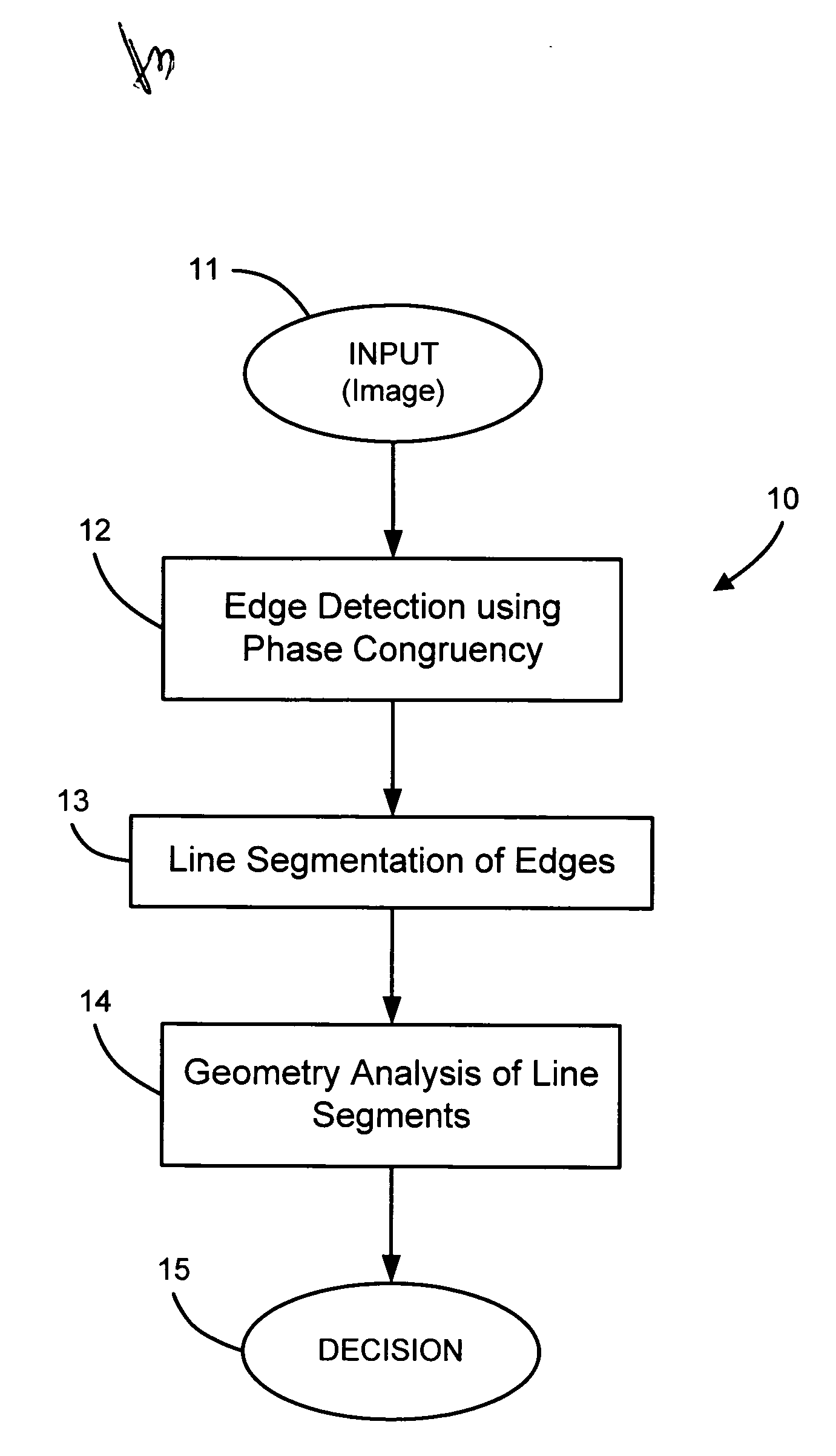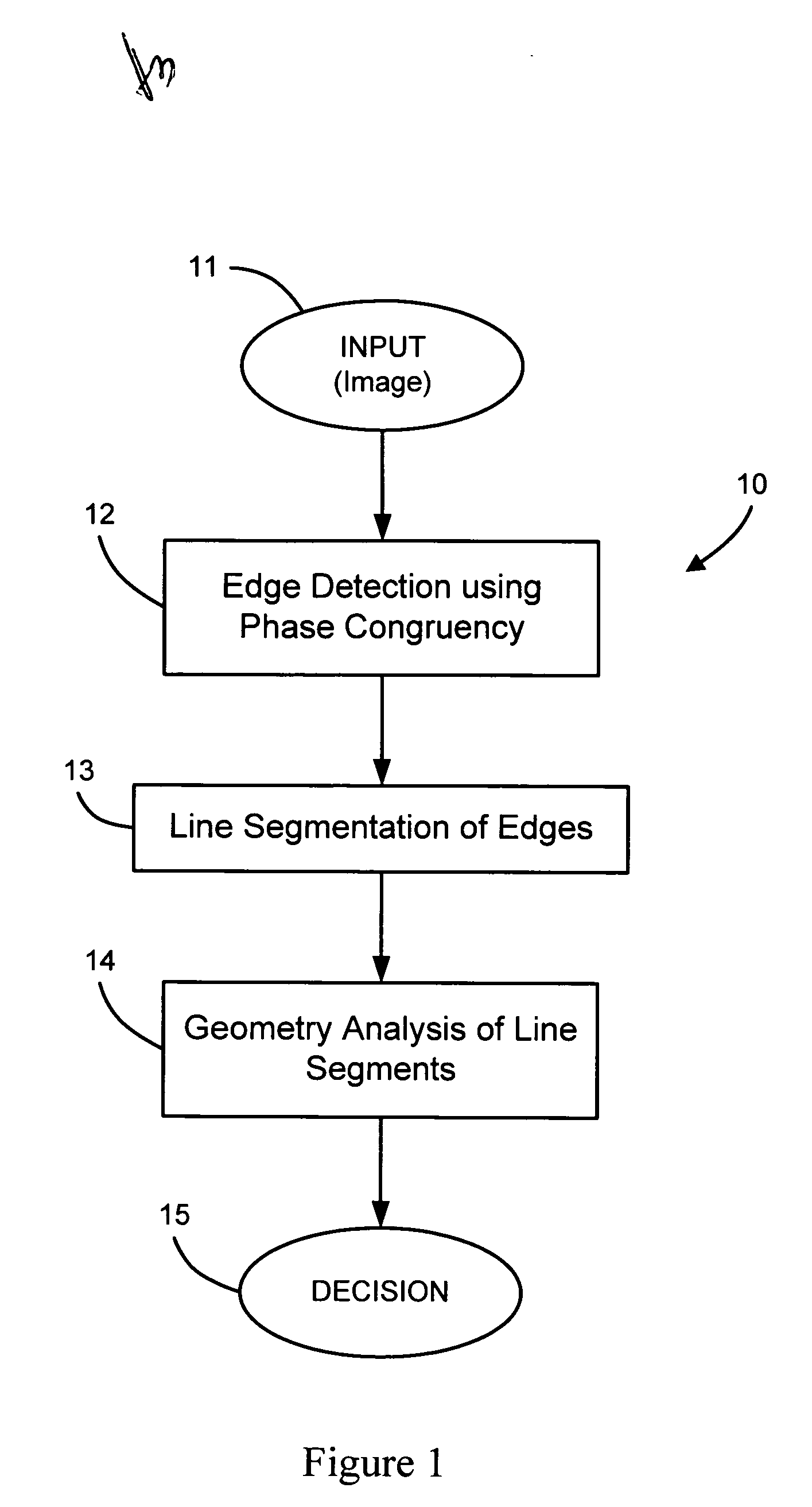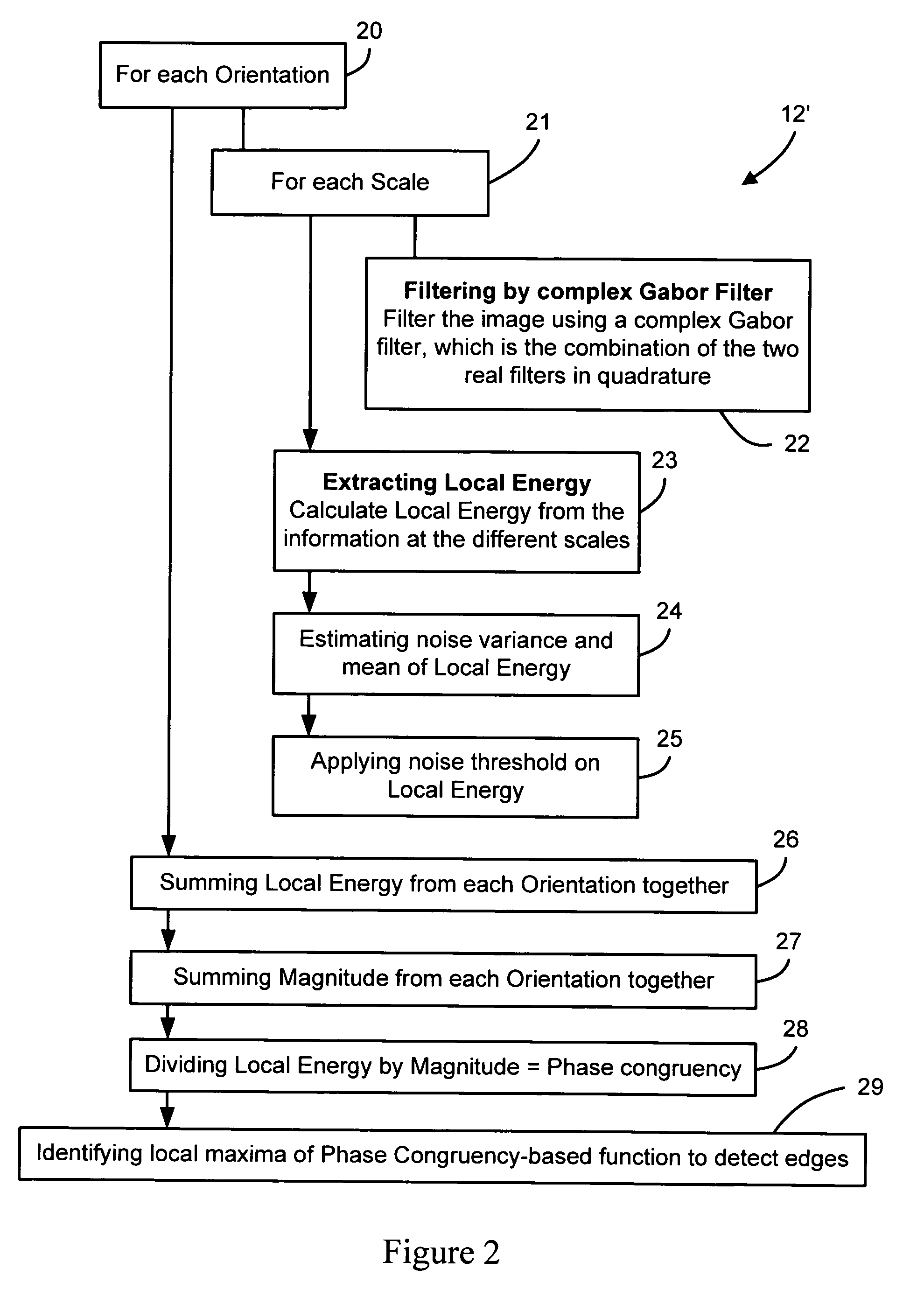Automated macromolecular crystal detection system and method
a detection system and macromolecular technology, applied in character and pattern recognition, instruments, computing, etc., can solve the problems of inability to comprehensively screen, large crystallization conditions, and difficulty in crystal growth, and still require visual inspection of each experimen
- Summary
- Abstract
- Description
- Claims
- Application Information
AI Technical Summary
Problems solved by technology
Method used
Image
Examples
Embodiment Construction
[0024] The present invention is an automated method and system (hereinafter “method”) for detecting the presence of macromolecular crystals from light microscopy images, such as those obtained from crystallography experiments. Generally, the automated method utilizes the phase information of the pixels in each image in performing crystal detection. This provides greater resistance to noise and other artifacts than amplitude based properties, e.g. pixel intensity, which can lead to poor image quality. And in particular, the phase information of the pixels is used to identify specific geometric features in an image attributable to and most likely indicative of a crystalline structure, such as, for example, parallel edges, of similar length, facing each other, in relatively close proximity. Evaluation of detected geometries in this manner makes possible a low rate of false-positive detections and an effective resolution to the visual inspection bottleneck discussed in the Background ca...
PUM
 Login to View More
Login to View More Abstract
Description
Claims
Application Information
 Login to View More
Login to View More - R&D
- Intellectual Property
- Life Sciences
- Materials
- Tech Scout
- Unparalleled Data Quality
- Higher Quality Content
- 60% Fewer Hallucinations
Browse by: Latest US Patents, China's latest patents, Technical Efficacy Thesaurus, Application Domain, Technology Topic, Popular Technical Reports.
© 2025 PatSnap. All rights reserved.Legal|Privacy policy|Modern Slavery Act Transparency Statement|Sitemap|About US| Contact US: help@patsnap.com



